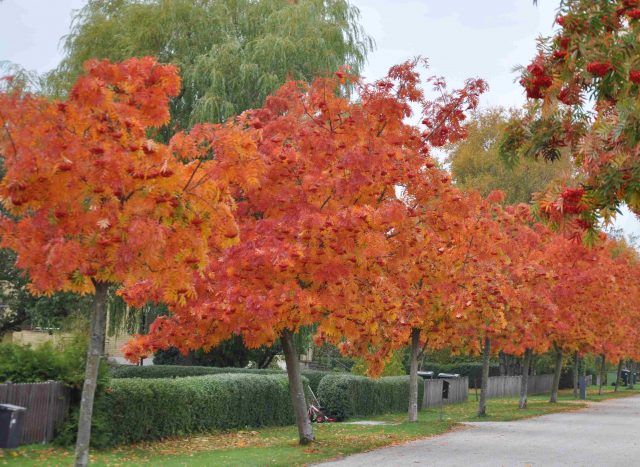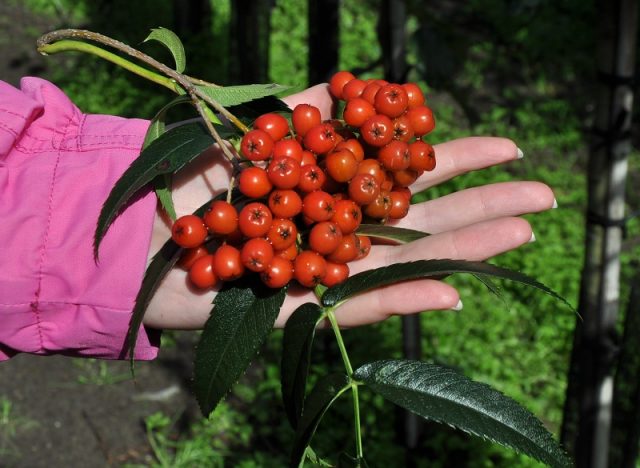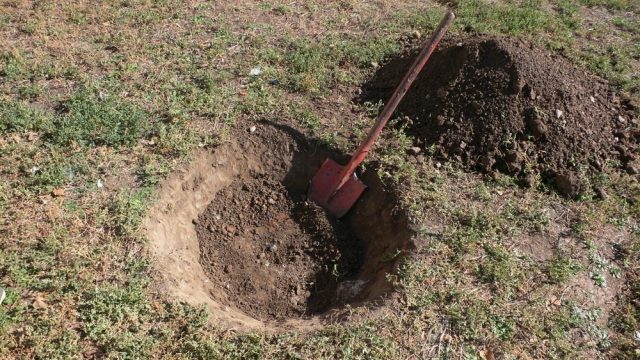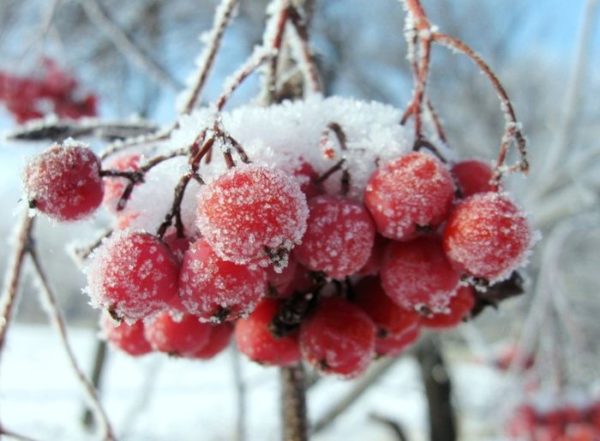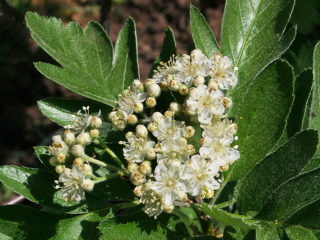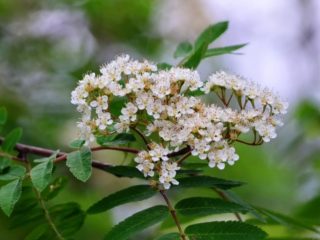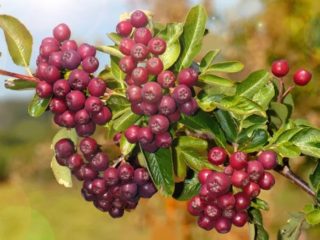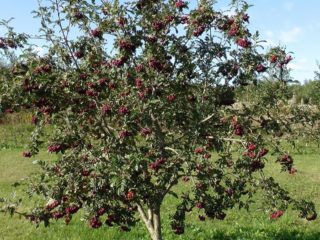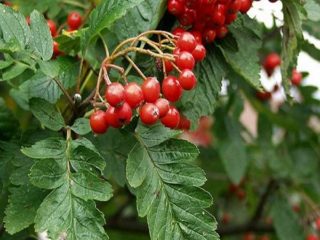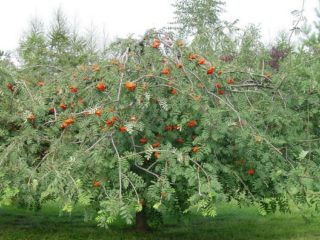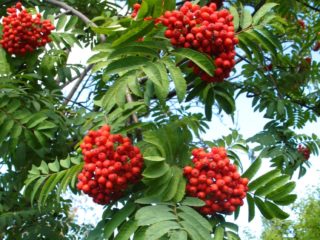Content
Rowan Dodong is an ornamental deciduous tree used in solitary and group plantings. Rowan is planted for landscaping public gardens, residential areas, children's and medical institutions.
Description of Dodong mountain ash
Mixed rowan Dodong is a compact tree with a columnar crown. Young seedlings have a narrow crown; with age it becomes spreading and reaches 5 m in diameter.
The height is about 8 m. The decorativeness of the Dodong rowan (pictured) lies in the color of the foliage. In spring and summer the leaves are green, and in autumn they turn fiery red with an orange tint. The leaves are large, odd-pinnate, lacy, consist of 12-15 small leaflets, their total length is about 30 cm.
The Dodong rowan tree blooms with white inflorescences. The flowers are small, their diameter does not exceed 1 cm. The flowering period depends on the region of growth, approximately this occurs in late May - early June. The Dodong variety has corymbose inflorescences that are larger than those of the common rowan.
Bright red pear-shaped berries give a beautiful appearance in autumn and winter, which after frost lose their initial bitterness and become sweet.
Pros and cons of the variety
Each seedling has advantages and disadvantages. The Dodong mountain ash also has them. The advantages of the variety include the following:
- decorative foliage that gives the tree an elegant look in the autumn;
- delicious fruits that are used to make preserves and jams;
- high frost resistance;
- unpretentiousness.
The disadvantages include:
- the need for formative pruning;
- when grown in shaded areas, the foliage loses its decorative color;
- the need to protect trunks from rodents. Hares like young rowan wood, so seedlings need to create shelters from mice and hares;
- When there is a lot of air pollution, the tree does not develop well.
Planting and caring for Dodong rowan
Dodong rowan seedlings selected for planting should not be older than two years of age. The rhizomes should have 2-3 branches, their length should be at least 25 cm. If the seedling has dried roots, it is advisable to soak them in Kornevin’s solution for several hours, otherwise the crop will take a long time to take root and the formation will slow down.
When choosing a seedling, carefully examine the bark of the trunk and shoots. It should not be damaged.
Sometimes it is not possible to plant a seedling right away. In this case, it is recommended to store it buried. The place for temporary storage of mountain ash should be shaded. When buried, seedlings are stored for no more than 1 month.
Preparing the landing site
Rowan Dodong is a tall tree, so when planting it in your personal backyard, you should take into account that it will shade other crops. It is best to plant rowan on the border of the garden plot or beyond.
Rowan of the Dodong variety loves sunny areas, where it reveals its decorative qualities.
Landing rules
Seedlings are planted in the fall 2 weeks before the first frost or in the spring (before the end of April).
Planting technology:
- standard pit depth is 0.8 m;
- a nutritious soil mixture consisting of a fertile layer of soil, ash, superphosphate, rotted manure and compost is poured into the planting hole;
- the seedling is placed vertically in the hole, the roots are straightened and covered with soil;
- well watered;
- the central shoot is shortened;
- if it is necessary to plant several trees, leave at least 4 m between them;
- The planting hole is covered from above with a layer of mulch. This will protect the roots from freezing, and in warm periods, from rapid evaporation of moisture and the appearance of weeds.
Watering and fertilizing
Young Dodong rowan seedlings need regular watering, because their root system is not able to independently provide the tree with a sufficient amount of liquid.
Adult specimens are drought-resistant, so they are watered when necessary.
Mulching allows you to retain moisture in the tree trunk; mulching materials (sawdust, straw, peat) are used to reduce watering.
Feeding young seedlings with nitrogen-containing products leads to inhibition of the root system; experts do not recommend using these fertilizers for the first 2-3 years.
Mineral fertilizers are applied three times per season. They begin to be introduced no earlier than the third year after planting.
The application of mineral fertilizers is carried out according to the following scheme:
- before flowering, use a mixture of urea (20 g), superphosphate (25 g) and potassium salt (15 g);
- in summer, a mixture of nitrogen, potassium and phosphorus agents (in equal proportions) is used. For 1 m² of tree trunk circle, 30 g of mixture will be required;
- In the fall, superphosphate and potassium salt are added at the rate of 10 g of each substance per 1 m² of area.
The above-mentioned fertilizers are applied to the tree trunk circle during digging, then the ground is watered.
Trimming
Rowan Dodong needs formative and sanitary pruning. The crown of young trees is formed in accordance with the design idea.
Sanitary pruning is carried out in spring and autumn. Remove broken and pest-damaged shoots and thickening branches.
The rowan tree develops numerous basal growths, which must be dealt with in a timely manner. To prevent the growth of root shoots, loosen the soil in the tree trunk circle to a depth of at least 5 cm.
Preparing for winter
Rowan is a frost-resistant tree, but at a young age it is advisable to mulch the roots of the seedling. Peat and sawdust are used as mulch. To protect the roots from freezing, it is necessary to pour at least 15 cm of a protective layer.
Pollination
Dodong rowan is considered partially self-fertile, so there is no need to plant pollinating varieties. Many gardeners note that rowan berries bear fruit better in group plantings, so they recommend planting several specimens of different varieties at once.
Harvesting
The sourish-bitter taste of the berries changes after the first frost, the bitterness goes away, and a slight sourness remains.
It is not recommended to leave overripe fruits on the tree, otherwise the harvest may be collected by birds.
The harvest from short trees is harvested by hand, and for taller representatives, scissors are used.
Diseases and pests
Dodong rowan has good resistance to insect pests and diseases.But sometimes there is an invasion of insects that can harm trees and deprive the harvest:
- Tree moth pupae overwinter in fallen leaves. At the beginning of June they turn into butterflies, which lay eggs on the fruits a week later. The formed caterpillars feed on the internal contents of the fruit, causing the harvest to be lost. The fruits first turn black and then rot. Prevention of pest invasion comes down to collecting and burning fallen leaves and digging up the tree trunk. To combat insects, use a Chlorophos solution. 14 days after flowering, the tree crown is treated with this product;
- Sawflies appear in early July. The larvae use foliage for food, and with the onset of cold weather they move to the soil for the winter. A solution of soda ash or lime will help get rid of pests. It is necessary to spray the crown and trunk with these compounds;
- The mite that appears on the leaves can be seen by specific swellings. To prevent the appearance of pests, before the rowan tree blooms, it is treated with a 1% sulfur solution;
- aphids settle on the underside of the leaf blade, which causes deformation of the leaves. To get rid of insects, use a soap solution or a 2% Nitrofen solution.
Of the diseases for Dodong mountain ash, the most dangerous is rust. The appearance of reddish-yellow spots on the upper side of the foliage indicates a developing disease. To prevent and combat the disease, copper-containing solutions, for example, Bordeaux mixture, are used. The first treatment is carried out at the end of May, subsequent treatments are carried out at intervals of 3 weeks.
Reproduction
Rowan can be propagated in several ways:
- seeds;
- cuttings;
- layering;
- vaccination;
- root shoots.
When propagated by seeds, there is no guarantee that the tree will inherit the maternal qualities.
Gardeners note that common hawthorn can be used as a rootstock.
Conclusion
Rowan Dodong is an ornamental tree distinguished by beautiful openwork foliage that changes colors in the autumn. Used for landscaping urban areas, parks, and local areas.
Reviews of rowan Dodong
